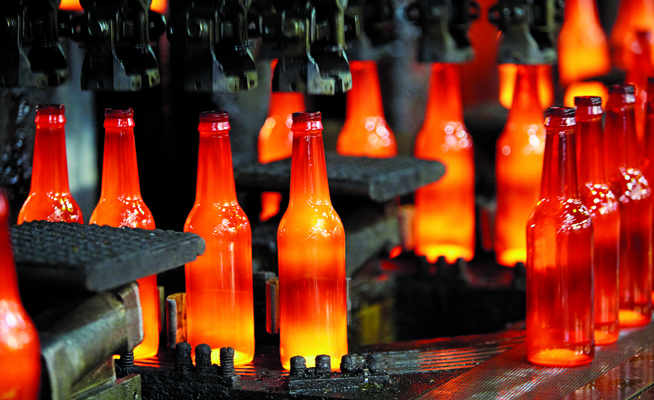Sialon Ceramics Ltd and Akve Arc Últrasonics Sarl announced a breakthrough in ultrasonic molten gas technology that can reduce energy costs by 20 percent and lower the environmental impact of glass manufacturing. The process uses a new ultrasonic generator and a proprietary ceramic sonotrode to treat large volumes of high viscosity molten glass at temperatures of up to 1,600 degrees Celsius.
Glass manufacture is a highly energy-intensive process. It involves two primary processes, glass melting and glass refining. In the glass melting process, the raw materials are first mixed into a batch and then introduced into a furnace where they are heated to a high temperature (up to nearly 1600 °C). The raw materials chemically react to form the glass.
Glass refining is then carried out to eliminate gas bubbles from the melt. This process is critically important to achieving good quality defect-free glass. The aim is to reduce the size and number of bubbles in the melt before forming the glass into containers. The process is lengthy and energy-intensive.
The two companies have developed an ultrasonic gas melt degassing technology which significantly increases the efficiency of this process, reducing the refining temperature and saving up to 20 percent of the energy cost.
Nico Van Dongen, Director of Sialon Ceramics, explained, “Removing gas bubbles from glass during its manufacture is an essential part of the glassmaking process. The gas bubbles form during the glass melting process, which involves several chemical reactions that create the glass.”
The chemical reactions produce large amounts of carbon dioxide and other gasses. Degassing involves bubble agglomeration. Dissolved gasses diffuse from the melt to form bubbles that rise to the surface and are expelled. The time this takes depends on the bubble diameter and the viscosity of the melt, which is a function of the melt temperature.
Various methods can improve the efficiency of this process. These range from the addition of fining agents, vacuum fining and even the use of microgravity. However, the application of ultrasonic-assisted glass refining is highly promising.
Describing the process, Mario Plasencia, Director of Akve Arc Ultrasonics, said, “Our ultrasonic degassing process uses a new ultrasonic generator and a proprietary ceramic sonotrode which can treat large volumes of highly viscosity molten glass at temperatures of up to 1,600 degrees Celsius. We carry this out at the forehearth of the glass furnace, placing the sonotrodes directly into the melt. This process allows us to reduce refining temperatures from around 1,450 °C to 1,300 °C. This is massive, and provides a total energy saving of up to 20 percent.”
The process is complicated. When ultrasonic energy at the right frequency is applied to a glass melt, acoustic cavitation occurs. Cavitation is a process in which rapid changes in pressure produce small vapour filled bubbles which collapse when subjected to high pressure generating a shock wave.
Gas dissolved in the melt diffuses into the cavitation bubbles. Gas bubbles form on the cavitation nuclei. These grow by diffusion from the melt into the bubble during ultrasonic oscillations. The tiny bubbles then coalesce under the influence of various forces and, when large enough, float to the surface of the melt releasing the gas within the bubble to the atmosphere.
Summarising this new development, Nico Van Dongen added, “Ultrasonic degassing of glass melts in the forehearth of a glass furnace is a breakthrough technology with the potential to considerably reduce the carbon footprint of the highly energy-intensive glass manufacturing industry.
The work is ongoing, and the current trial is 50 percent funded by Sialon Ceramics Ltd who are working in partnership with Akve Arc Ultrasonics Sarl.




